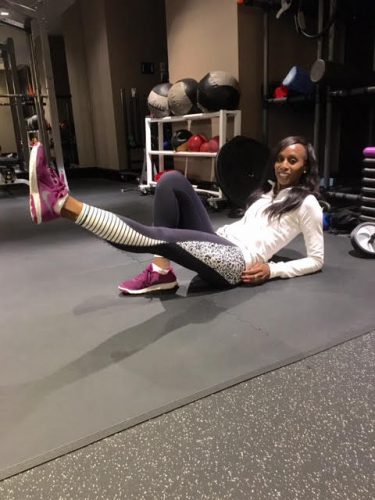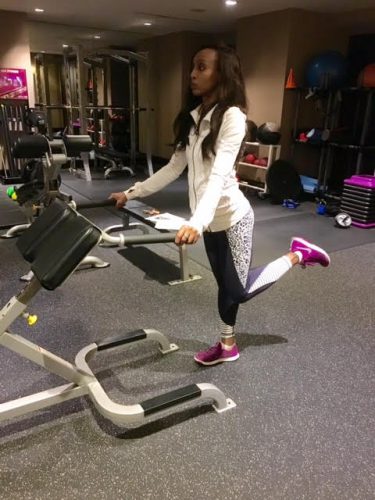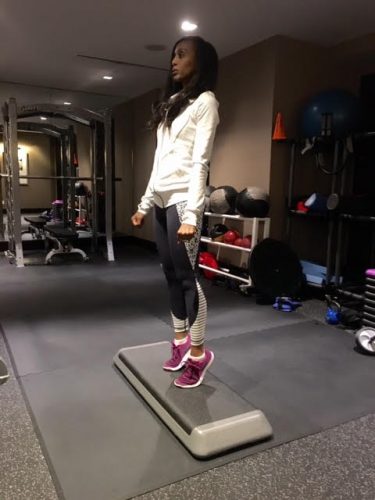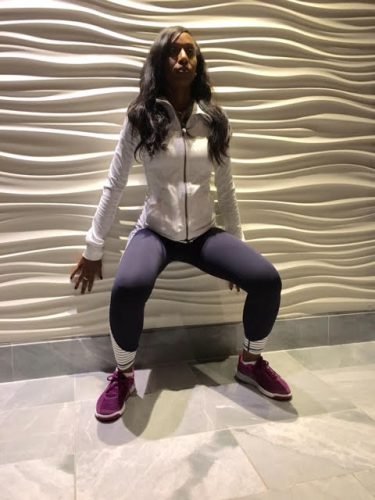Knee pain is a common complaint that is heard from people of all ages and affects both sexes. Knee pain can be caused by a variety of medical conditions such as an injury, arthritis, infection, a torn meniscus or ligament or gout. Certain sports, excess weight, and previous injury are risk factors which can increase stress on the knee joint. In my previous blogs, I’ve spoken about how physical therapy, weight loss, avoiding or limiting certain activities and sometimes medications in the right setting can help alleviate some knee pain.
What else can be done?
KEEP MOVING, STAY ACTIVE!
Often, people may limit physical activity completely to avoid aggravating the knee however, it is important to gradually return to mild activity that might help improve knee strength, such as swimming. Some physicians may also encourage individuals to participate in a comprehensive physical therapy program for several weeks.
Remember every person’s body is different and you should discuss with your trainer, fitness instructor or physician whether certain exercises are safe for you to do.
Women and men can engage in quadriceps (muscle on front of thigh) and hamstring (muscles in the back of thighs) stretching exercises at home, outside or in the workplace to help strengthen the ligaments and tendons around the knee joint.
Tai chi, yoga and plain old stretching are all examples of activities that will keep the muscles flexible and promote better mobility and range of motion. Sometimes orthotics, a brace, or a splint may be needed to allow extra support for the weakened knee or prevent the knee from moving too much. Some people have even tried acupuncture as an alternative option but it is unclear if this therapy works.
KEEPING THAT KNEE FIT
There are so many exercises out there that can help improve knee strength and pain. Checkout my favorite exercise for a stronger knee! I usually do this exercise two to three times during the week. I know that time is limited but you can sometimes do it in the office, gym or your home.
STRAIGHT LEG RAISE SPOTLIGHT
I like to start my workout with this move!
Lie on your back with some support if needed. Bend one knee while straightening the other leg and lift the leg. Flex the foot of the straight leg toward your head and hold for five to ten seconds. Hold the leg at approximately a 45 degrees and return the straight leg to the floor. The straight leg should not surpass the height of the other bent knee. It is important to make sure that the leg is straight while tightening the quadriceps muscle. You can repeat this maneuver ten to fifteen times before switching to the other leg. You can do 3 sets. Sometimes if I want a challenge, then I can consider adding an ankle weight while performing this exercise.
Check out these other exercises with your physician and determine which ones work best for you! For most of these exercises, you can repeat for 3 sets.

a) Side Leg Raises
Lie on one side and bend the bottom leg for support while the top leg is straight and can be raised to approximately 45 degrees. Hold for a few seconds and lower the leg. Repeat this maneuver ten to fifteen times and then alternate to the other side.

b) Hamstring curls
I like to do this exercise standing up while holding on to a chair or gym equipment and lift my heel as close to my buttocks and hold for a few seconds.
For a quadriceps stretch, repeat this maneuver but grab your ankle and pull the heel closer to your body and hold.

c) Calf stretch or calf raise
I like to use a step platform or face the back of a chair or gym equipment for support for this move. Simply elevate the heels as high as you can and then lower.

d) Wall squat
The feet (shoulder width apart) must remain planted on the floor while positioning the back against a wall. Bend the knees in a controlled manner while having the back and pelvis/hips remain against the wall and hold for five to ten seconds. You can hold for longer periods for a challenge. It is important not to cause knee discomfort if over bending occurs. Remember to adjust the position if you feel uncomfortable or have pain in the knee.

Remember to seek medical attention if sharp or sudden pain occur in any joint or surrounding muscles during any exercise or activity.
References
Disclaimer: This blog contains my personal opinion based on personal and clinical experience, tips from trainers, health coaches and lastly research. This blog does not endorse specific treatments, procedures, products. You should always consult with a doctor, nutritionist, or other healthcare professional to discuss your own health and lifestyle goals and regimen based on your medical history. Thank you for reading!
